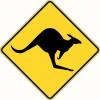Some like the extra weight of the bronze and the fact that it wonít rust the way iron will (though it will tarnish and leave black streaks on your work if not used often enoughóthis is certainly true of my sonís bronze #101). I chose the iron #4 over the bronze after trying both (as well as a low-angle jack) at a LN tool event. The iron one they had available gave more feedback than the bronze. I donít know if this would be true of all the iron versus bronze planes they sell, but it was true of the particular planes at the tool event. Feedback is also a major reason for my preference for bevel-down planes.
To answer your original question, given a choice between those two planes my preference is for the bevel-down plane with Bailey-style adjustments. I have no direct experience with the Veritas bevel-up smoother, so my opinion isnít based on that particular plane. I am well aware that bevel-up planes have their fans, are less expensive, and can be made to work well (including tearout mitigation at a high cutting angle) but upon trying out the low-angle jack I immediately objected to the feel. Why? It didnít provide as much feedback. When planing, I like to feel what is happening as the wood is cut so that I can make adjustments as needed. With a bevel-down plane, I like to place at least my forefinger and sometimes also my thumb on the blade to get more information: feedback comes through in more ways and in a way thatís easier for me to read.
I also like to use the cap iron for tearout mitigation. I havenít tried high cutting angles for this purpose because of my preference for Bailey/bedrock planes, so I canít compare the two methods based on experience. As I recall, Derek Cohenís test results showed a better surface finish using a bevel down plane and close-set cap iron than with a high cutting angle even though both methods worked to mitigate tearout.
I also prefer the Bailey-style adjustments. Precise adjustments (particularly on the fly) are simply easier for me than with Norris style adjusters.






 Reply With Quote
Reply With Quote





